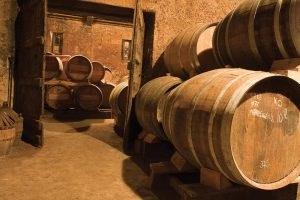Green Acres Irish Gin – the Story

Although a fairly recent event, I have wanted to tell the story behind Green Acres Irish Gin since its inception. As we approach its 1st year anniversary, I think it is opportune to do so here in this blog, now.
Firstly, the name. There are many fantastically named gins out in the marketplace, but we avoided going that route. Put simply, we wanted to make a gin in Ireland that would reflect the Green Acres sense of discovery.
Here’s a little bit of gin history, by way of background. Originally, the name gin came from the French name for the juniper berry – genièvre. This was changed by the Dutch to genever and shortened by the English to gin.
Its origin is attributed to a 17th– century medical professor in Holland. He distilled the juniper berry with spirits to produce an inexpensive medicine with diuretic properties. This article is a good read if you would like a more detailed historical timeline on the topic.
If you don’t read the article above, I’d just like to paraphrase their description of how the G&T was born. When India was a British colony, a local cure for malaria was quinine taken from the bark of the chinchona or ‘fever’ tree. To make the bitter quinine more palatable, ‘sugar, lime, ice and gin were added’, ergo, the gin & tonic was created.
It is also worth mentioning that according to Peter Mulryan of Blackwater Distillery in Waterford, ‘the sweetened juniper-heavy jenever, created by the Dutch in the 17th Century has little in common with the clean, clear-scented spirit we now call gin. The modern incarnation of this drink owes its existence to an Irishman, Aeneas Coffey. He patented a column still capable of producing a very pure spirit which didn’t need sweetening…’
This reference to Peter Mulryan is a good place for me to start our own Irish gin story.
We were aware that Peter and his co-director, Kieran Curtin, were producing unique Irish gins in their craft distillery on the Blackwater River. However, with our experience of fine wines, it was their Juniper Cask Gin that intrigued both myself and Donal Morris, a co-director here in Green Acres.

If Juniper Casks – Why Not Irish Gin in Wine Barrels?
As the juniper berry is the core botanical in gin, Peter and Kieran had contemplated what would happen to the taste of a gin if it was aged in a cask made from juniper wood? They had some juniper barrels made, which wasn’t as easy as it sounds as juniper trees aren’t very large. After their experiment, pictured above, their Irish gin went on to win a silver medal at the 2016 IWSC in London. The rest is history.
During this period, the Irish gin revival was in full swing. Marrying this to the Green Acres sense of discovery, Paula, Donal and I thought about adding an Irish gin to our own spirits portfolio. We had started doing so with red and white wine in 2007, so why not gin?
What’s more, we wondered, what if we aged gin in an old wine barrel – would the taste be influenced by the contact with the toasted wood? Then we thought about experimenting with the ‘sweetness’ of a Sauternes barrel. (Sauternes is a French sweet wine from the Sauternais region of the Graves section in Bordeaux).
That was the spark! We would contact one of our negotiants in the Bordeaux region of France to see if they would give us such a barrel. We approached the Sichel family (pictured below) of Chateau Angludet fame, (wine merchants for 6 generations) and told them about our journey of discovery.

The Introduction of Pineau des Charentes to Irish Gin
The Sichel family could see what we were trying to achieve. However, they suggested not using a Sauternes barrel but a cask used in making Pineau-des-Charentes (a blend of cognac and red wine). This is produced by a mutual friend in Chateau d’ Orignac whom we knew – son of the owner, Yvan Meyer.
With such a recommendation, of course, we were delighted to visit Yvan in Chateau d’Orignac for a tasting. We were totally mind-blown with what we saw and tasted on that visit. We now stock Pineau-des-Charentes at Green Acres and I would really, recommend you try it. Here’s a link. Oh yeah, and they gave us an old cask to take back to Ireland for our gin experiment.

Back in Ireland, our next call was to Peter in Blackwater Distillery where we discussed botanicals. With our experience in the wine business, we were more interested in the balance of the botanicals in the end product rather than the number, to be honest. Suffice to say that we agreed on many of the classics and added a few secret ones. One that I can tell you of, is heather. Yep, pure Wexford heather is used in Green Acres Irish Gin.
Originally, this heather was going to be collected from the local Forth Mountain in Wexford. My wife, and co-director Paula, being amused by my logistical planning to procure this plant, pointed out the abundance of purple and white heather in our own garden. “Even better”, I said, and off I went to Peter in Blackwater with my home-grown heather under my arm.
Peter and Kieran worked their magic with Sally, the name they have given to their traditional copper pot still. The gin was then aged for 5 months in the Pineau-des-Charentes cask that we had brought over from France. Influenced by this cognac barrel, we hoped and wanted, the gin to acquire a slightly deeper colour characteristic (i.e. straw-like). Essentially, we wanted to add a little more complexity, body, and depth to the finished product.
We tasted our gin at regular intervals during the aging process and soon discovered that we were onto something special. The colour was getting deeper as the days counted by and the flavours intensified. On the 15th of September 2016, we bottled this glorious product at 42% abv. We were thrilled with the end product which we believe is a top quality gin with a unique taste.
Who knows – when this batch is gone we might even experiment a little more.

With regards to adding tonic, I’ve no qualms in saying that we favour a local product – Poachers Tonic (www.twitter.com/poacherswell ). Sweetened with sugar beet and flavoured with Irish rosemary and orange, the tonic is being marketed as a low sugar, preservative and sweetener-free alternative to mass-produced tonics. For garnish, we recommend a slither of ginger placed in amongst the ice cubes.

The bottle retails for €39 and can be purchased online or in the shop here in Wexford. Of course, you don’t have to buy a bottle, you can always pop in and have a glass and a chat at our bar on the ground floor.
Before, I finish I would like to go on record to thank Yvan Meyer and his family for providing us with the cask to make the original Green Acres Irish Gin. Below is a picture of Paula presenting Yvan Meyer with one of the first bottles out of the cask.

To Finish
There are hundreds of botanicals available to make gin. As a result, every craft gin can have its own unique recipe thereby being able to satisfy most tastes. In Ireland right now, there are many examples of exceptional Irish gins on the market doing just that.
“According to the Irish drinks industry, Irish gin volume sales were at 110,000 nine-litre cases in 2014 but are expected to hit 150,000 cases by next year. The on-trade gin market in Ireland (meaning sales in bars, restaurants etc.) is now worth some €50 million – an all-time high” (source June’17 – Irish Times)
In general, because gin doesn’t have to be aged to improve – it is perfect for the impatient imbiber/producer. We just feel that the extra 5 months aging in our cask, is worth the wait.
If you would like to receive future articles from us just click here, or on the red subscribe button up on the right-hand side of this page.
We look forward to engaging with you soon – Cheers, James


